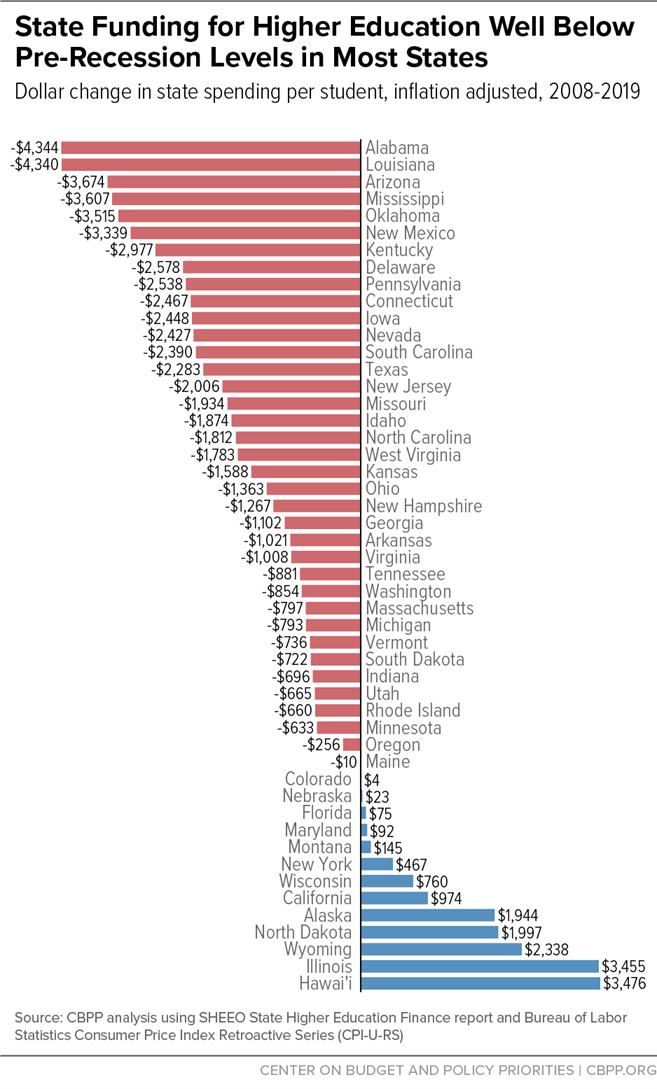A well-funded public higher education system opens up countless opportunities for upward mobility and stability, especially for low-income students and students of color. Yet, in 2019, New Jersey spent 19.6 percent, or $2,006, less on each student than it did before the Great Recession, according to a new report from the Center on Budget and Policy Priorities. What’s worse, during the COVID-19 pandemic, New Jersey lawmakers cut higher education funding by $168.2 million to help balance the state budget.
Years of cuts to higher education, tuition increases, and the diminishing value of financial aid make college less affordable and less accessible. The average tuition at New Jersey’s public four-year institutions grew by 12.8 percent, or $1,646, between 2008 and 2019. At New Jersey’s community colleges, which typically serve a greater share of Pell Grant recipients — grants for students with exceptional financial need —tuition grew by 24 percent, or $974, between 2008 and 2019.
Rising tuition costs also place greater burdens onto groups that have historically and currently face barriers to higher education, like New Jerseyans of color and those with low incomes. In 2018, New Jersey’s public tuitions cost the average Black and Latinx/Hispanic households 14 percent and 13 percent of their incomes, respectively. Meanwhile, the cost of public tuition only costs the average white family 8 percent of their household income.
New Jersey is not alone. Nation-wide, undergraduate enrollment decreased by more than four percent between the fall 2019 and 2020 semesters. Students who are low-income, Black or Latinx/Hispanic, unemployed, or single parents have been more likely to cancel their college plans. Students with low incomes are also more likely to take on and struggle to repay student loans, a situation that the ongoing recession could worsen absent stronger state investments.
An equitable economic recovery will depend on a well-educated workforce. Therefore, policymakers must prioritize raising new and sustainable revenue to support higher education. This could be accomplished, in part, by closing corporate tax loopholes and ensuring wealthy heirs pay their fair share in taxes. If not, cuts to public higher education will continue to reduce opportunities for students of color and students from low-income families.


